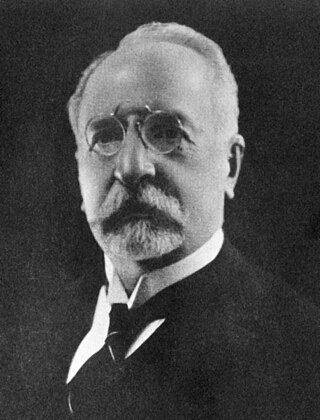Top Qs
Timeline
Chat
Perspective
Johannes Franz Hartmann
German physicist and astronomer From Wikipedia, the free encyclopedia
Remove ads
Johannes Franz Hartmann (11 January 1865 – 13 September 1936) was a German physicist and astronomer. In 1904, while studying the spectroscopy of Delta Orionis he noticed that most of the spectrum had a shift, except the calcium lines, which he interpreted as indicating the presence of interstellar medium.[2][3]
| 965 Angelica | 4 November 1921 | MPC |
| 1029 La Plata | 28 April 1924 | MPC |
| 1254 Erfordia | 10 May 1932 | MPC |
He was the director of the La Plata Astronomical Observatory, Argentina, from November 1922 to May 1934, and was also known under the name Juan Hartmann. He oriented the work of the observatory towards astrophysics and discovered the three asteroids of the main-belt, 965 Angelica, 1029 La Plata and 1254 Erfordia at La Plata between 1921 and 1932.[1]
His doctorate was from the University of Leipzig in 1891 on lunar eclipses.[4]
The lunar crater Hartmann on the far side of the Moon was named in his honor. Note, however, that the asteroid 3341 Hartmann was named after William K. Hartmann and is unrelated to him.[5]

Remove ads
See also
- Hartmann mask, a tool to help focusing telescope
References
External links
Wikiwand - on
Seamless Wikipedia browsing. On steroids.
Remove ads

